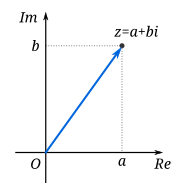Page 1 of 1
Imaginary Force
Posted: Wed Apr 01, 2015 10:42 am
by AlternateGravity
I was just thinking about how when a force is applied to an object it causes an acceleration to the object and the acceleration is directly proportional to the force. I was wondering how would an object accelerate if an imaginary amount of force was applied to it?
Re: Imaginary Force
Posted: Fri Apr 03, 2015 12:14 pm
by testtubegames
Well, if there were imaginary forces, I suppose things could get quite... complex?
http://i.giphy.com/SUeUCn53naadO.gif
The first problem you'd have with an imaginary for, I suppose, is defining exactly what you mean by it. I know what 1 Newton is, and I know what 2 Newtons are. But what does i Newtons even mean? Maybe, just as complex numbers can be defined in a polar plane... you'd make some similar mapping for complex forces/velocities/positions. Would that ever be helpful? I'm not sure.
In other branches of physics (outside of newtonian mechanics), imaginary numbers pop up a whole lot, and in fun interesting ways. You'll find them in electromagnetism and in quantum mechanics, often used as a way of describing the 'phase' of something. (When you've got waves, say, and they interfere, you need to know whether they interfere constructively or destructively. Knowing the phase of each lets you do that). The crazy thing? Any time you want to describe a quantity you can measure... the imaginary part disappears. You either just care about the magnitude, or it goes away for some other math-y reason. So the imaginary parts are just like an intermediate tool we can use to get the right answer. And they don't necessarily need to 'mean' anything in the real world.
Maybe there'd be a similar way to use imaginary forces? I'm not sure.
Re: Imaginary Force
Posted: Sat Apr 04, 2015 7:34 pm
by Stargate38
Think of it as the tangent force in GSim. If you wanted to see what happened in a universe with a force law of 1/r^2+e^(ir)=1/r^2+cos(r)+i*sin(r), you would put it as gravityF=1/r^2+cos(r), tangentF=sin(r). Basically, imaginary forces are perpendicular to real forces, copied directly from the complex plane:

So a speed (vx, vy) of (2, 6) would be the same as (6i, 2i), and a velocity of (3+2i, 256+1i) would be the same as (4, 258).
Re: Imaginary Force
Posted: Tue Apr 07, 2015 5:52 pm
by testtubegames
Stargate38 wrote:Think of it as the tangent force in GSim.
That's one possible way to define complex forces so that they'd be useful. But, really, we're just using the fact that complex numbers actually contain two different, independent numbers here. So it's a convenient way to simultaneously talk about forces in two different axes, and using (real) vectors would be helpful for that same thing.
Taken at the most literal, though, if someone asks about imaginary forces, it seems to imply that there's some 'imaginary' dimension for objects to move around in. Since a force vector can contain x,y,z components... and if they were allowed to be complex, they'd also need to be able to be pushed along the ix, iy, iz axes. And I don't know any spatial axes that match those descriptions.
When we're in 2-d, as with the Gravity Sim, it's easy to make the imaginary axis be some 'tangential' force as opposed to a radial force. But once we're in a world of three spatial dimensions, the 'tangential' direction doesn't make a whole lot of sense.
